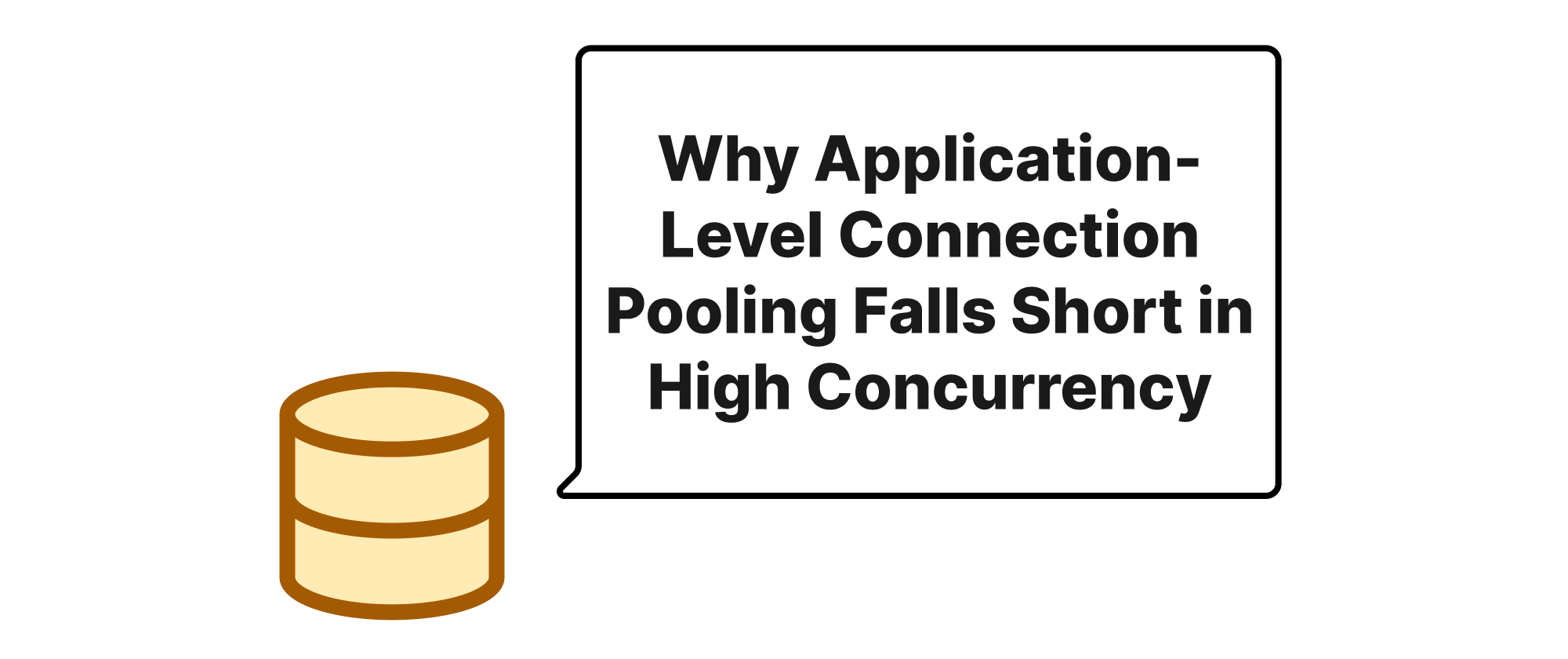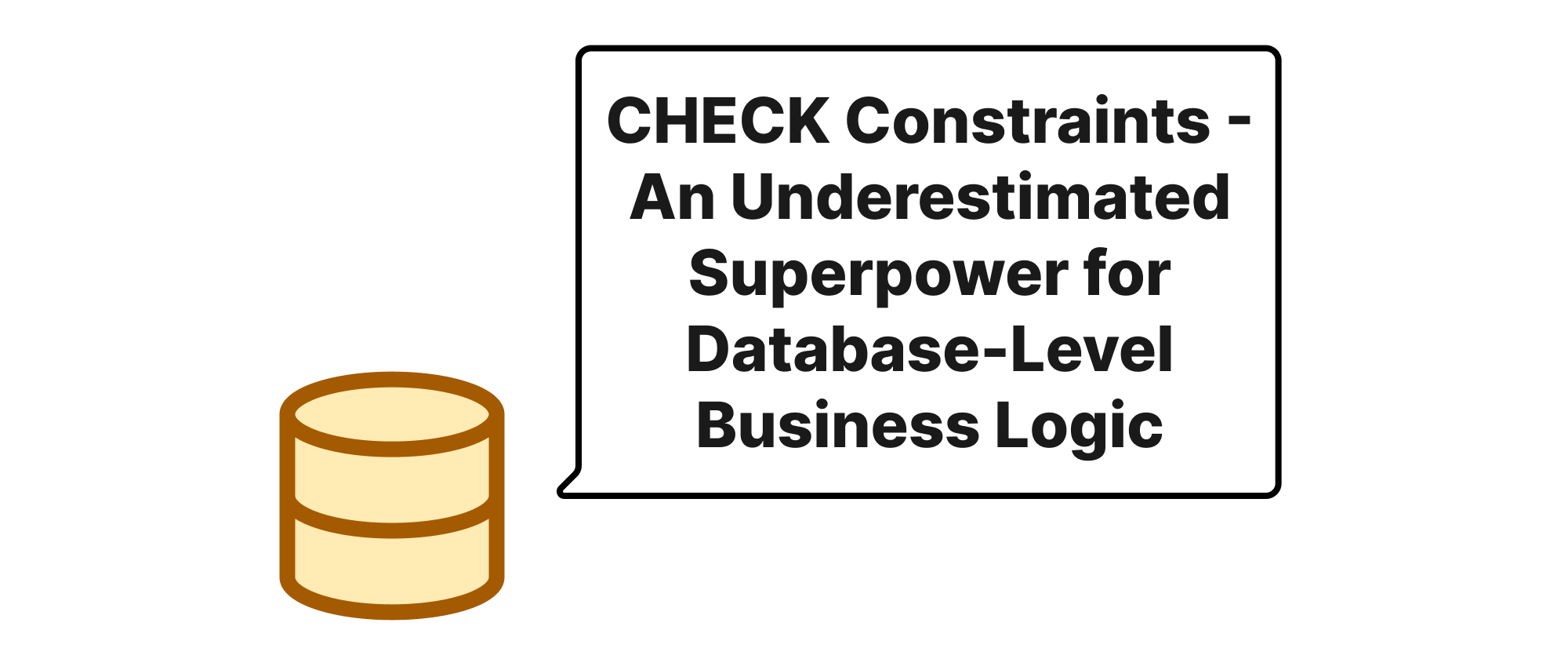Why Application-Level Connection Pooling Falls Short in High Concurrency
Lukas Schneider
DevOps Engineer · Leapcell

Introduction
In the world of high-performance applications, efficiently managing database connections is paramount. Each connection consumes valuable server resources, and poorly managed connections can quickly become a bottleneck, severely impacting application responsiveness and scalability. While most modern application frameworks offer some form of built-in connection pooling, providing a seemingly convenient way to reuse database connections, a critical question often arises when operations scale up: is application-level connection pooling truly sufficient for the demands of high-concurrency environments? This article delves into the limitations of relying solely on application-level pooling and makes the case for dedicated connection poolers such as PgBouncer and RDS Proxy, explaining why they are indispensable for robust, scalable database architectures.
The Bottleneck of Application-Level Connection Pooling
To understand why application-level pooling can fall short, we first need to define the core concepts involved:
- Database Connection: An open communication channel between an application and a database server. Establishing a new connection is a relatively expensive operation, involving handshake protocols, authentication, and resource allocation on both ends.
- Connection Pooling (Application-Level): A technique where an application maintains a pool of open, reusable database connections. Instead of opening a new connection for each request, the application borrows a connection from the pool and returns it when finished. This reduces connection establishment overhead and database resource consumption. Examples include HikariCP in Java, SQLAlchemy's
QueuePoolin Python, or built-in pooling mechanisms in Ruby on Rails. - Dedicated Connection Pooler (e.g., PgBouncer, RDS Proxy): A separate, lightweight proxy service that sits between the application and the database. It manages a much larger pool of connections to the database and allows multiple application connections to share a smaller set of actual database connections. This offers advanced features like connection multiplexing, authentication, and graceful database restarts without disrupting applications.
While application-level pooling works well for moderate loads, its fundamental limitation lies in its process-centric or instance-centric nature. Each instance of your application (e.g., a web server process, a microservice container) maintains its own independent connection pool. Consider an application deployed across multiple instances, perhaps behind a load balancer:
Application Instance 1 --(Pool 1)--> Database
Application Instance 2 --(Pool 2)--> Database
Application Instance 3 --(Pool 3)--> Database
In this scenario, even with application-level pooling, the database still sees connections from multiple, independent pools. If each application instance maintains, say, 20 connections, and you have 10 application instances, the database could be handling 200 concurrent connections. Each of these connections consumes memory and CPU resources on the database server. As concurrency increases, the database server can become overwhelmed not by query execution but by the sheer number of active connections it has to manage. This phenomenon is often characterized by high memory usage, increased context switching, and slower query execution dueal to resource contention.
This problem is exacerbated during connection spikes or "thundering herd" scenarios. If application instances restart or scale up, they might all try to establish new connections concurrently, flooding the database with connection requests. Even if application-level pools are configured with healthy minimum and maximum sizes, the aggregate number of connections can quickly reach critical levels, potentially leading to database outages.
This is where dedicated connection poolers become critical. They introduce a layer of abstraction and control:
Application Instance 1 --(App Connection)--> PgBouncer/RDS Proxy --(DB Connection)--> Database
Application Instance 2 --(App Connection)--> PgBouncer/RDS Proxy --(DB Connection)--> Database
Application Instance 3 --(App Connection)--> PgBouncer/RDS Proxy --(DB Connection)--> Database
In this setup, each application instance connects to the connection pooler, not directly to the database. The pooler then maintains a much smaller, optimized pool of actual connections to the database. For example, 100 application connections could be multiplexed onto just 20 database connections by the pooler.
Let's illustrate with a simple Python example using psycopg2 and then contrast with how a pooler would intervene conceptually.
Application-level pooling (conceptual Python psycopg2 example):
import psycopg2 from psycopg2 import pool import threading import time # In a real app, this would be configured globally or per microservice # Each app instance would have its own pool min_connections = 5 max_connections = 10 conn_pool = pool.SimpleConnectionPool(min_connections, max_connections, host="localhost", database="mydatabase", user="myuser", password="mypassword") def worker_thread(thread_id): connection = None try: connection = conn_pool.getconn() print(f"Thread {thread_id}: Acquired connection. Total active: {conn_pool.closed_and_idle_connections + conn_pool.used_connections}") cursor = connection.cursor() # Simulate some database work cursor.execute("SELECT pg_sleep(0.1)") cursor.close() print(f"Thread {thread_id}: Released connection.") except Exception as e: print(f"Thread {thread_id}: Error: {e}") finally: if connection: conn_pool.putconn(connection) # Simulate multiple concurrent requests from THIS application instance threads = [] for i in range(20): # 20 concurrent requests from ONE app instance thread = threading.Thread(target=worker_thread, args=(i,)) threads.append(thread) thread.start() for thread in threads: thread.join() conn_pool.closeall() print("All connections closed.")
If you run this locally, you'll see psycopg2's SimpleConnectionPool managing
connections within this specific Python process. When max_connections is hit,
subsequent getconn() calls will block until a connection is available or a
timeout occurs. If you had 10 such Python processes running, the database would
see up to 10 * max_connections connections.
Role of a Dedicated Pooler (PgBouncer/RDS Proxy):
Instead, the application would connect to PgBouncer/RDS Proxy.
Application -> PgBouncer/RDS Proxy -> Database
PgBouncer operates in different modes:
- Session pooling (default): This is the most common mode. A server connection is assigned to the client for the duration of the client's session. When the client disconnects, the server connection is returned to the pool. This is good for applications that have relatively long-lived connections but don't need persistent state across transactions.
- Transaction pooling: A server connection is assigned to the client only for the duration of a transaction. When the transaction finishes, the server connection is immediately returned to the pool. This is highly efficient for workloads with many short transactions. This is where explicit connection multiplexing happens.
- Statement pooling: Not commonly used for Postgres due to protocol limitations, but would assign a connection for a single statement.
Consider the transaction pooling mode, which offers the highest efficiency:
-- Application connects to PgBouncer, PgBouncer assigns it a client_id BEGIN; SELECT * FROM users WHERE id = 1; UPDATE products SET stock = stock - 1 WHERE id = 10; COMMIT; -- PgBouncer immediately returns the database connection to its internal pool -- even though the application's *client connection to PgBouncer* might still be open. -- A different application request (or even the same app client, but a new transaction) -- can now execute: BEGIN; INSERT INTO orders (user_id, product_id) VALUES (1, 10); COMMIT; -- PgBouncer again reuses a database connection for this short transaction.
The key benefit here is that PgBouncer (or RDS Proxy) effectively decouples the number of application connections from the number of database connections. The database only sees the connections managed by the pooler. This drastically reduces the database's overhead and improves its stability under high load.
Furthermore, dedicated poolers offer:
- Centralized Connection Management: Easier to monitor and configure connection limits across your entire fleet of application instances.
- Throttling and Queueing: If the backend database becomes overloaded, poolers can queue incoming connection requests, preventing a cascading failure.
- Graceful Failover/Restart: When the database needs to be restarted or a failover occurs, the pooler can hold onto application connections and transparently re-establish connections to the new primary, minimizing application downtime.
- Authentication and Authorization: Can handle client authentication, reducing the load on the database or even providing an additional layer of security.
For example, RDS Proxy automatically handles failovers for RDS instances. When an RDS instance fails over, the DNS changes. Without RDS Proxy, application connections would break, requiring applications to re-establish them. With RDS Proxy, it detects the failover, gracefully closes its connections to the old instance, and establishes new ones to the new primary, all while holding open client connections. This process is much faster and more transparent to the application.
Conclusion
While application-level connection pooling is a fundamental best practice for efficient database interaction, it's inherently limited by its distributed nature across multiple application instances. For high-concurrency environments, traffic bursts, or large fleets of microservices, relying solely on these internal pools leads to an explosion of open connections on the database server, causing performance degradation and instability. Dedicated connection poolers like PgBouncer and AWS RDS Proxy act as a crucial intermediary, centralizing connection management, multiplexing connections, and providing advanced features that significantly enhance database resilience and scalability. In essence, for true high-concurrency performance, application-level connection pooling is a necessary first step, but a dedicated connection pooler is the essential next leap.


